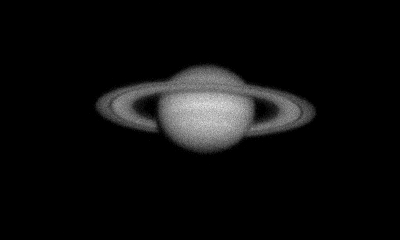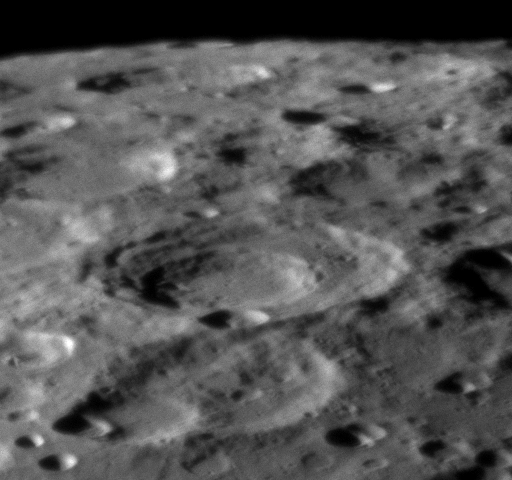Imaging Source DMK 21AF04.AS
Camera review for solar system imaging
Page 4 - DMK 21AF04 example captures
Here some practical sample captures with the camera to demonstrate raw frame and final results qualities.
Saturn 2007.03.11
One of my best Saturn captures so far. Seeing was good but not very good. Choosing shorter exposure/integration times to the disadvantage of higher gain settings = more noise helped to freeze the seeing.
Capture settings for the red channel:
| Exposure/integration | 1/23s |
| Gain | 820 (max. is 1023) |
| Black level / brightness | 0 (slider all left) |
| Gamma | 10 (slider all left) |
| ROI | 400 x 240 |
| Frame rate | 15 fps |

Best red channel frame - click image for lossless BMP

Processed red channel result with 1500 frames used - click for full details

Processed RRGB result - click image for full details
The raw frames show noticable random noise, no surprise since a very high gain setting has been used for the capture to freeze seeing with short integration times. Stacking 1500 frames eliminates the noise and allows sharpening details without enhancing noise. No sytematic noise patterns are visible even with heavy sharpening pointing out a good signal processing quality of the camera even at high gain settings.
Moon 2007.03.25.
Seeing was slightly above average but not yet in the range I would call good. Again I used more gain to shorten exposure times. Random noise in the raw frames is quite low considering the gain is used at ~60% of the maximum gain. 380 stacked frames have been enough to have an almost noise free result after sharpening.
| Exposure/integration | 1/30s |
| Gain | 600 (max is 1023) |
| Black level / brightness | 0 (slider all left) |
| Gamma | 10 (slider all left) |
| ROI | Full frame |
| Frame rate | 30 fps |

Part of a better raw frame - click image for full lossless BMP
